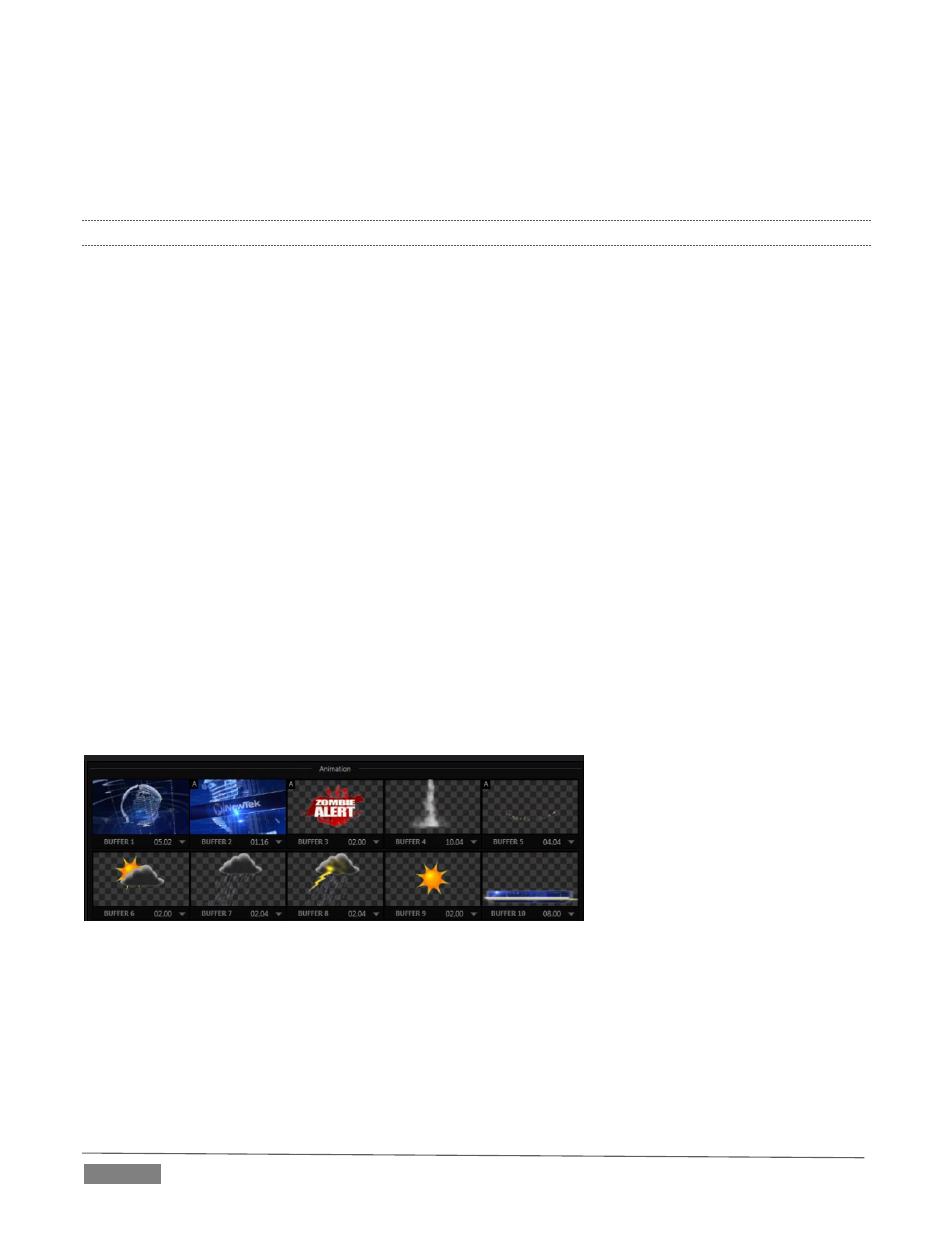1 buffer types – NewTek TriCaster Advanced Edition User Guide User Manual
Page 136

Page | 124
Buffers are sometimes even more useful than similar imagery supplied from Media Players. Buffers are
retained in Switcher Memory for immediate recall and display. Using a buffer for a specific DSK or M/E
channel (rather than a Media Player) eliminates the risk of accidentally displaying the wrong graphic, as
might otherwise happen if the current Media Player item selection was not the one intended.
11.4.1
BUFFER TYPES
Buffers support the following media types:
Animation effects (TriCaster 460, 860 and 8000 only)
These are short duration full-motion video effects created in your favorite graphics or video applications
and compiled using the add-on Animation Store Creator application.
o
Looping effects – These animations play repeating endlessly, making them ideal for station ID
‘bugs’ and the like.
o
Auto-run effects – These effects auto-run on display following a Take or Auto. Playback runs
once and then holds the last frame.
Graphics (all TriCaster models)
o
Images – 24 bit or 32 bit (with embedded alpha channel) images.
o
Title pages – editable TriCaster title pages, identical to those served up by the various Media
Players.
Buffers tab item selection and display is controlled by a Buffer (BFR) button on main Switcher source rows,
M/E rows, and options in DSK
and
M/E Key source menus.
For TriCaster 8000, the top ten buffer slots (or the top five, for other TriCaster Advanced Edition models)
support both compiled animation effects and graphics – still image files or TriCaster title pages.
FIGURE 144
The remaining buffer slots are restricted to graphics content, including popular image formats along with
TriCaster title pages (i.e., .cgxml files).